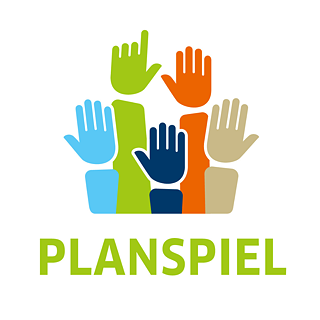“Climate-Neutral City” Simulation game
The students take on the roles of various interest groups in the fictitious city of Fonta, discuss and negotiate under the leadership of the mayor in their respective national languages, with which measures they can reduce the CO2 emissions of their city by 50% by 2030. After the actual simulation, the students create a three-minute video in German in which they present the measures that the city should implement to the fictitious city parliament.
It’s getting warmer every year. As we humans make ever more use of fossil fuels, cut down forests and practise intensive agriculture, we are changing the climate: more heat waves and droughts, melting glaciers, rising sea levels.
Participants in the “Climate Neutral City” simulation game competition slip into the role of mayor, a member of “Fridays for Future” or head of the tourism office of the invented city Fonta for the duration of the game. Invited by the mayor representatives of different interest groups gather at a “Round table” in order to negotiate and to decide about possible measurements on how to to reduce the city’s CO2 emissions by half by 2030, based on a fixed budget . It aims to become “climate neutral” and no longer emit any CO2, thus helping stop global warming. To reach this goal, the players must decide on the steps to take and ultimately achieve a result by working together.
At the end of the simulation game, the commission will present the result and record the presentation in a three-minute video.
It makes sense to implement the simulation game as part of a project day or project week.
The simulation game is played on a PC or tablet using browser-based software. The participants can both be discussing and negotiating face to face when at school or -when at home- use a video conferencing tool (.e.g.Zoom) to exchange information during the game.
Participants in the “Climate Neutral City” simulation game competition slip into the role of mayor, a member of “Fridays for Future” or head of the tourism office of the invented city Fonta for the duration of the game. Invited by the mayor representatives of different interest groups gather at a “Round table” in order to negotiate and to decide about possible measurements on how to to reduce the city’s CO2 emissions by half by 2030, based on a fixed budget . It aims to become “climate neutral” and no longer emit any CO2, thus helping stop global warming. To reach this goal, the players must decide on the steps to take and ultimately achieve a result by working together.
At the end of the simulation game, the commission will present the result and record the presentation in a three-minute video.
It makes sense to implement the simulation game as part of a project day or project week.
The simulation game is played on a PC or tablet using browser-based software. The participants can both be discussing and negotiating face to face when at school or -when at home- use a video conferencing tool (.e.g.Zoom) to exchange information during the game.
A simulation game is an exciting didactic teaching and learning format. It facilitates experiential learning, which is considered as particularly lasting – and it’s also fun. The core of a simulation game is a real or fictitious challenge. Participants examine key topic-related questions from different perspectives and learn both how difficult and how important it is to take different interests into account and work out compromises. As the outcome of the game is not predetermined, participants can look for different solutions, while putting their negotiation skills to the test and making decisions. They thus experience and shape challenges rather than merely talk ABOUT them.
- promote constructive handling of conflicts
- strengthen opinion-forming and debate skills
- contribute to democracy education
- motivate to social commitment –
- deepen knowledge about climate change
Since 2021, more than 80 schools from 9 countries, including Germany, Estonia, the United Kingdom, Latvia, Lithuania, Poland, the Czech Republic, Ireland, and India, have participated in the simulation game. Over 1600 students aged 14 and above took part. Most with German language skills at level A1-A2.
The feedback has been overwhelmingly positive: 99% of teachers and 90.6% of students express their desire to participate in another simulation game. Additionally, 72% of students can envision improving their German language skills to engage in a simulation game conducted in German.
The feedback has been overwhelmingly positive: 99% of teachers and 90.6% of students express their desire to participate in another simulation game. Additionally, 72% of students can envision improving their German language skills to engage in a simulation game conducted in German.
Questions?
Please don't hesitate to contact us. We are happy to help!
Simulation Game 2025
The following Goethe-Institutes are supporting participation in this project:
Goethe-Institut Alexandria, Egypt
Goethe-Institut Tallinn, Estonia
Goethe-Institut Chennai, India
Goethe-Institut Peking
Goethe-Institut Vilnius, Lithuania
Goethe-Institut Rabat, Morocco
Goethe-Institut Karachi, Pakistan
Goethe-Institut Warschau, Poland
Goethe-Institut Riad, Saudi Arabia
Goethe-Institut Taipeh
Goethe-Institut Tunis, Tunisia
Goethe-Institut Alexandria, Egypt
Goethe-Institut Tallinn, Estonia
Goethe-Institut Chennai, India
Goethe-Institut Peking
Goethe-Institut Vilnius, Lithuania
Goethe-Institut Rabat, Morocco
Goethe-Institut Karachi, Pakistan
Goethe-Institut Warschau, Poland
Goethe-Institut Riad, Saudi Arabia
Goethe-Institut Taipeh
Goethe-Institut Tunis, Tunisia

